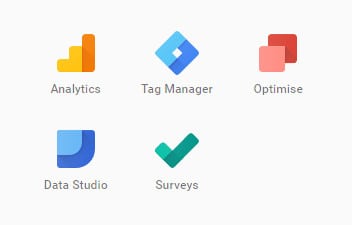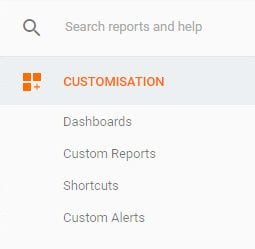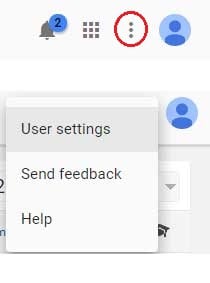If you use Google Analytics on a regular basis, you may have noticed a few design changes. In this article, we’ll look at what’s new. Before we start, it’s important to know that no new features have been added, these are purely aesthetic changes.
1. Material Design
The design will now seem more familiar. I often feel like Google Analytics is a tool that gets neglected when Google comes round to doing their updates, but not this time. If you are familiar with other Google products, Google Analytics will feel very familiar, as they have given it the new material design treatment too.

2. Navigation
Everything has moved to the left! Say goodbye to the navigation at the top; Home, Reporting, Customisation and Admin have all been relocated. Admin has been relocated to the bottom of the side navigation.
This is more convenient, making it easier navigating to settings and back to reports. No more waiting for Google Analytics to reload, the reports are always waiting for you to the left of the page – meaning you don’t have to go into the reports view!

3. Account Lists
Switching between accounts has been tweaked. No longer is it located at the top right of the page. If you spend most of your time in Google Analytics, you may welcome this change.
This makes it very easy to switch between accounts. If you miss the old view and like to have a full page of all your accounts, fear not, the view is still accessible through a click of the Google Analytics logo.

4. Customisation
Google have been kind enough to give us a new tab in the sidebar called Customisation. As you would expect, this is a one stop shop for all. Here you will now find Dashboards, Custom Reports, Shortcuts and Custom Alerts. Your standard reports remain, such as Real-Time reports, Behaviour and so on.
You will find there is one report that is missing; the Page Insights report, although it’s very unlikely this is a report that will be missed due to the wealth of accessible tools on the market currently. It is a shame that Google didn’t treat us to any new reports in this update though.

5. Date Range
If you ever find yourself working with the same data range on a regular basis, but when you login to Google Analytics this date range has been set back to the default, you will be glad to know that there is now an option to change this date range by default.
Google Analytics default date range in the past has been set to 28 days. You now have the option to change this to the last 7, 14, 28 and 30 days. To change the default time range for reporting in Google Analytics, simply click the overflow menu represented by 3 dots, navigate to the User Settings and then make the necessary amendments.

Although no new functionality has been added, all in all the latest round of design changes should make Google Analytics a more enjoyable experience. Happy Analysing!
